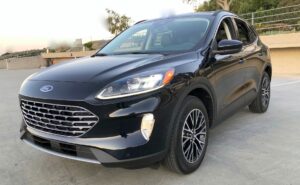What You Need to Know To Make Sure You Get the Best Deal
This article may contain affiliate links.
What factors affect the car insurance rate? It is a question that many drivers are interested in, and for a good reason. Car insurance can be expensive, so knowing what goes into determining rates is important.
This article will discuss the factors that affect rates, such as the model and size of your vehicle. In addition, it will talk about how age, location, and driving history can impact your premiums. Keep reading to learn more about the least expensive cars in insure.
1) Vehicle Model

When it comes to car insurance, not all vehicles are created equal. As a result, some models will cost more to insure than others. Generally, luxury and sports cars will be more expensive to insure than a sedan or SUV.
This is because these cars may be more likely to be involved in an accident and are also more expensive to repair. EV also, because of their repair costs, fall into this category
On the other hand, some of the least expensive cars to insure (with links to our reviews) are:
2) Vehicle Size
The size of your car also affects how much you pay for insurance. Smaller cars are usually cheaper to insure than larger ones. For example, a compact car will cost less to insure than an SUV. It is because they tend to be less expensive to repair and replace. In addition, smaller cars have better safety records.
Safety records involve the number of claims filed and how much those claims cost. Smaller cars typically have better safety records.
Comprehensive and collision coverage are two types of car insurance that will usually cost more if you have a larger car.
3) Age
When it comes to car insurance, age is just a number. Your premium is based on your driving experience—the number of years you’ve been behind the wheel. The idea is that the more time you spend on the road, the less likely you are to get into an accident.
This logic applies to drivers of all ages, but it’s especially important for young drivers. According to the National Highway Traffic Safety Administration, 16-year-olds have the highest crash rate of any age group. And car insurance premiums reflect that risk.

4) Location
The location–where a vehicle is parked–also affects rates. For example, if you live in an urban area with a high crime rate, your rates will be higher than those of a rural area with a low crime rate.
There is a greater chance that your car will be stolen or vandalized in an urban area.
The location also affects rates if you live in a state with many car accidents.
For example, Florida has a higher rate of car accidents than any other state, so Floridians pay some of the highest rates in the country.

5) Driving History
When it comes to your driving history, insurers will look at accidents and traffic violations. You’re more likely to get a lower rate if you have a clean record. On the other hand, your rates will be higher if you have accidents or tickets on your record.
Conclusion
Whether you’re looking for your first car or trying to save money on the latest EV, consider these factors when determining the cheapest cars to insure. The model, size, and safety features of your car will all play a role in the cost of your insurance premium.

@Stephen,
We’re always glad to help. –ed.